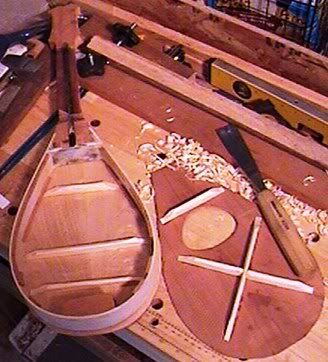I would like to construct a table or graph that shows the glass transition temperature (the temperature at which wood can be bent because the lignin has been softened) for lignin (the part of wood that holds the fivers together the glue in wood) vs. the percent moisture content of the wood.
I know that dry lignin (zero moisture) requires a temperature of 338 degrees F. With steam, approximately 200 degrees F in the wood, I can bend wood with as low as 10% moisture content. I can also bend green wood at ambient temperature and it will only set if I secure it until it dries. These observations are antidotal except for your 388 degrees F.
If you have any information about how the lignin in wood behaves with temperature and moisture please share it with us.
I believe that if we could publish the table or graph I want to construct it would put a lot of things into perspective for woodworkers that want to bend wood.
I know that dry lignin (zero moisture) requires a temperature of 338 degrees F. With steam, approximately 200 degrees F in the wood, I can bend wood with as low as 10% moisture content. I can also bend green wood at ambient temperature and it will only set if I secure it until it dries. These observations are antidotal except for your 388 degrees F.
If you have any information about how the lignin in wood behaves with temperature and moisture please share it with us.
I believe that if we could publish the table or graph I want to construct it would put a lot of things into perspective for woodworkers that want to bend wood.

